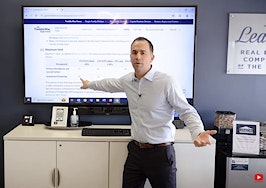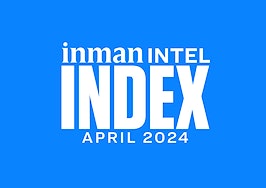With the path of the economy still dependent on the course of the pandemic, the Federal Reserve is in no rush to begin tapering its $120 billion in monthly purchases of mortgage-backed securities and government debt, Fed policymakers said Wednesday.
Many economists believe those purchases — which include $80 billion in Treasurys and $40 billion in mortgage-backed securities — have helped keep mortgage rates near record lows. But as the balance sheet of the Fed’s quantitative easing program approaches $8 trillion, and inflation starts to rise, some critics want the Fed to at least start talking about when it might taper.
That didn’t happen Wednesday, with neither the statement issued by the Federal Open Market Committee, or Fed Chairman Jerome Powell’s remarks, shedding any new light on the timetable for scaling back the Fed’s debt purchases or raising the short-term federal funds rate from zero.
In a statement, the committee said, “The path of the economy continues to depend on the course of the virus. Progress on vaccinations will likely continue to reduce the effects of the public health crisis on the economy, but risks to the economic outlook remain.”
In December, the committee said it would continue buying $120 billion in debt a month “until substantial further progress” was made toward reaching its employment goals and inflation targets. Although the long-term goal is for inflation not to exceed 2 percent, the Fed reiterated today that it’s OK with inflation “moderately exceeding” that target for some time.
“Our asset purchases have been a critical tool,” Powell said at a press conference following Wednesday’s meeting. “They helped preserve financial stability, and since then have helped foster financial conditions to support the economy. At our meeting that conclude earlier today, the committee adopted its asset purchase guidance last December. We also reviewed some considerations around how our asset purchases might be adjusted, including their pace and composition, once economic conditions warrant a change.”
Asked if he was providing advance notice before tapering, Powell said that was not his intention.
“We’ll try to provide additional clarity about our thinking, both in the post meeting statement and minutes and public comments that people make,” Powell said. “You know, our approach has been to be as transparent as we can. We have not reached ‘substantial further progress yet,’ so we’re not there. We see ourselves as having some ground to cover to get there. That’s what I would say.”
Powell said that in order for the committee to conclude that it had made “substantial further progress,” it would like to be closer to its maximum employment goal.
“Maximum employment, there isn’t a single number that we can target,” the Fed chairman said. “We monitor a broad range of data, different aspects of the labor market. There is unemployment among different age groups and such. There’s participation, there’s wages, there’s all kinds of flow data. We look at all of it to try to arrive at a picture of what is maximum employment.”
“I would want to see strong job numbers,” Powell said to a follow-up question. “That’s kind of the idea.”
Powell acknowledged that inflation is running above the Fed’s 2 percent objective, “and has been for a few months. It’s expected to run certainly above our objective for a few months before we believe it will move back down to our objective. The question whether we’ve met that objective is one for the committee to make. I can’t do that by myself.”
In normal times, the Fed’s main monetary policy tool is the adjustments it makes to the short-term federal funds rate — the rate banks charge each other for overnight loans. When the economy is overheating and inflation exceeds the Fed’s target, it can raise the federal funds rate, making it more expensive to borrow. When the economy stalls, the Fed can lower short-term rates to encourage borrowing and stimulate growth.
The federal funds rate
Gray bands indicate recessions. Source: Board of Governors of the Federal Reserve System, Federal Reserve Bank of St. Louis.
But once the Fed has lowered the federal funds rate all the way to zero — as it did during the 2008 mortgage meltdown and at the outset of the pandemic in March 2020 — it has other tools it can turn to if needed.
By buying Treasury bonds and mortgage-backed securities, the Fed can keep long-term interest rates low. This quantitative easing is supposed to be temporary. When the pandemic hit, the Fed had only started to unwind more than $4 trillion in assets on its books from the Great Recession of 2007-09.
Fed quantitative easing approaching $8 trillion
Assets held by the Federal Reserve through quantitative easing purchases now total $7.66 trillion, including $5.24 trillion of long-term Treasurys and $2.42 trillion in mortgage-backed securities. Source: Board of Governors of the Federal Reserve System, Federal Reserve Bank of St. Louis.
On March 15, 2020, the Federal Open Market Committee committed to buy at least $500 billion in Treasurys and $200 billion worth of mortgage-backed securities. Since then, the Fed’s holdings of Treasurys have grown by nearly $3 trillion, and its MBS holdings have increased by more than $1 trillion.
That’s a source of concern to some economists, including, Mohamed El-Erian, chief economic adviser at Allianz, parent company of bond giant PIMCO.
“You can argue quite easily that the economic benefits are limited and are far exceeded by the costs and risks that are starting to undermine the prospects for high, durable, inclusive growth,” El-Erian told Politico this week in advance of the Fed’s meeting.
Mortgage rates have been at or near historic lows during the pandemic. Rates on 15-year fixed-rate mortgages hit a new low during the week ending July 22, and 30-year fixed-rate mortgages aren’t far above the all-time low of 2.65 percent seen in January.
But some critics say the Fed gets too much credit for the impact its purchases have on rates, and others worry that low mortgage rates are contributing to runaway home price appreciation, since low rates give consumers more homebuying power.
But tapering can be “quite a complicated thing, there are lots of moving pieces” including how quickly to scale down purchases, and whether to concentrate on mortgages or Treasurys, St. Louis Fed President James Bullard told CNBC last month.
Asked whether he’d scale down purchases of mortgages or Treasurys first, Bullard said he’s “leaning a little bit toward the idea that maybe we don’t need to be in mortgage-backed securities with a booming housing market and even a threatening housing bubble here, according to some people.”
In a note to clients, Pantheon Macroecomics‘ Ian Shepherdson said the rate of growth of labor costs “remains the single most important determinant of future U.S. inflation.”
The Fed, Shepherdson said, “could not stand back and ignore a sustained surge in wage inflation, unless policymakers could be confident it would be offset by faster productivity growth. But none of this will be clear until the late fall, and perhaps not until early 2022. Tapering will start before then, but the Fed’s leadership will want to proceed more cautiously than some of the more hawkish — and talkative — regional presidents.”












